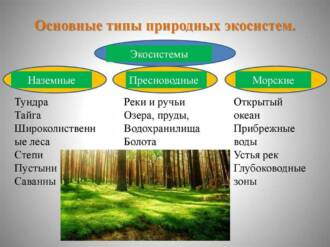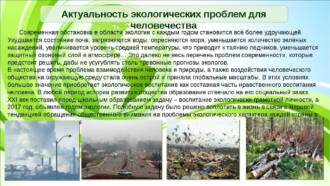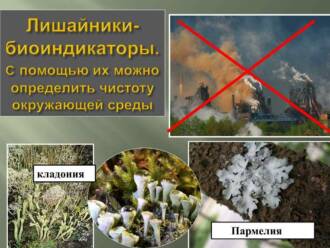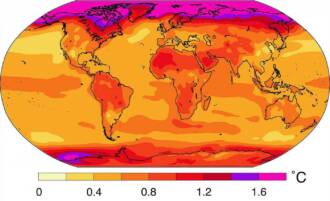
Butterflies, these graceful creatures with wings, are not only objects of delight and inspiration for many people, but also important indicators of the health of the environment. Due to their sensitivity to changes in the biotope, butterflies can inform us about the state of nature and the presence of environmental problems.
One of the main factors affecting butterfly populations is the quality and availability of their natural habitat. They inhabit a variety of ecosystems, from forests and grasslands to mountains and deserts, and are an important part of the food chain for many other animals. Changes in the environment, such as the destruction of natural habitats, air and water pollution, and the use of pesticides, can significantly reduce the number of butterflies and even lead to their extinction.
Butterflies are also sensitive to climate change. Changes in temperature, rainfall, and seasonality can affect their reproduction, migration, and food availability. Some species of butterflies can be adapted to certain climatic conditions and may become vulnerable when these conditions change. Studying butterfly populations and their behavior can help scientists predict and evaluate the impact of climate change on ecosystems and biodiversity.
Thus, butterflies play an important role in ecological monitoring and provide information about the state of nature. Their presence or absence, as well as changes in their abundance and diversity, can signal potential problems in an ecosystem. The protection and conservation of butterflies and their natural habitats are important steps in maintaining biodiversity and environmental health.
Butterflies and their role in ecology
Butterflies are one of the most important elements of an ecosystem and play an important role in maintaining biological balance. They are the pollinators of many plants, helping them to reproduce and spread. Butterflies carry pollen from one flower to another, contributing to the fertilization of plants and ensuring their diversity.
Butterflies also serve as food for many other animals, such as birds, frogs, and spiders. They are part of the food chain and act as “filters,” cleaning the ecosystem of dead plants and other organic material. Butterflies are indicators of environmental health, as their presence or absence can indicate the health of the ecosystem and the quality of the air and water.
Butterflies are also a source of amazing beauty and inspiration for many people. Their variety of shapes, colors and patterns attracts attention and admiration, and they often serve as a symbol of nature and freedom. Butterfly watching can be not only a fun activity, but also a way to connect with the environment and take an active part in its conservation.
All of this highlights the importance of conserving and protecting butterflies and their habitats. Taking measures to preserve biodiversity and create favorable conditions for the development and reproduction of butterflies is a key step in preserving nature and caring for future generations.
Butterflies as indicators of environmental quality
Butterflies are not only beautiful and delicate creatures, but also reliable indicators of environmental quality. They are biological markers that reflect the state of ecosystems and can tell us about possible changes in the environment.
One of the reasons why butterflies are good indicators is because of their sensitivity to changes in the environment. They respond to changes in temperature, humidity, air pollution and the presence of pesticides. If the environment becomes less favorable for butterflies, their number and diversity of species may decrease.
Butterflies also serve as indicators of biodiversity. Their presence or absence in a certain area may indicate the presence or absence of certain plants that are their source of nutrition. If butterflies disappear from a certain area, this may indicate a reduction in biodiversity and an imbalance in the ecological balance.
Using butterflies as indicators of environmental quality allows us to assess the health of ecosystems and identify issues related to pollution, biodiversity loss and climate change. This is important for taking measures to conserve natural resources and create a sustainable environment for the life of all organisms, including humans.
Why are butterflies so sensitive to change?
Butterflies are among the most sensitive and indicator creatures in nature. Their sensitivity to changes in the environment is due to several factors.
1. Sensitivity to temperature and climate
Butterflies are very dependent on temperature and climatic conditions. They are ectothermic creatures, that is, their body temperature depends on the environment. Even small changes in temperature can seriously affect their activity, reproduction and survival.
2. Dependence on vegetation

Butterflies are the main pollinators of many plants. They feed on the nectar of flowers and interact with plants at the pollen level. Changes in vegetation, such as reduced areas of meadows, forests or gardens, have a negative impact on their ability to forage and reproduce.
3. Pesticide exposure and pollution

Butterflies are very sensitive to pesticides and environmental pollution. They can be killed by small amounts of chemicals that are used in agriculture or industry. This is because their respiratory system and skin are very thin and easily exposed to toxins.
In general, butterflies are bioindicators of the health of the environment, as any changes in their abundance and diversity can indicate problems in the ecosystem. Therefore, the protection of butterflies and their habitats is an important task for the conservation of biodiversity and ecological balance.
How butterflies help assess pollution
Butterflies are excellent indicators of environmental pollution. They are sensitive to changes in air, water and soil quality, as well as to the presence of toxic substances. Due to their biology, butterflies can serve as an important indicator of the state of nature.
One way to assess environmental pollution with butterflies is to study their diversity and quantity. If the number of butterflies decreases or their species disappear, this may be a sign that harmful substances are present in the environment or inappropriate conditions for their life and reproduction.
Another method for assessing pollution using butterflies is to study genetic changes in their organisms. Butterflies can accumulate toxic substances, so the analysis of their genetic material can show the presence of certain harmful substances in the environment.
Also, butterflies can help assess environmental pollution by studying their behavior. For example, some species of butterflies may be sensitive to changes in the concentration of carbon dioxide in the air, which may be related to air pollution.
In general, butterflies are important indicators of environmental health and studying them can help identify problem areas and take action to improve them.
Butterflies and climate change

Butterflies are important indicators of climate change in the environment. Changing temperatures and weather conditions affect their life cycles, migrations and distribution.
Migration
Climate change may lead to a change in the location of butterflies. Some species may move to cooler or warmer regions to find optimal conditions for reproduction and survival.
Distribution
Climate change may also affect the distribution of butterflies within certain regions. For example, some species may become more common or rare depending on changes in temperature and the availability of food resources.
Life cycle
Climate change may also affect the life cycle of butterflies. For example, warmer winters can lead to early emergence of butterflies in the spring, and changes in precipitation can affect the availability of food resources for caterpillars.
In general, butterflies are climate-sensitive organisms, and their behavior and distribution can serve as important indicators of the state of the environment and changes in the ecosystem.
Impact of biodiversity loss on butterflies
Butterflies are important indicators of environmental health and changes in biodiversity. They are sensitive to the loss of a variety of plants, as well as changes in climatic conditions and the use of pesticides. Therefore, the loss of biodiversity directly affects butterfly populations and their ability to perform their ecological functions.
Decreased food sources
The loss of plant biodiversity leads to a decrease in the number of food sources for butterflies. Butterflies are mainly plant-eating phytophages. Each species of butterfly has its own preference for plants on which they can breed and feed. If these plants disappear from the environment due to human disturbances or other factors, butterfly populations can be severely affected.
Violation of interactions in the ecosystem
Butterflies also play an important role in ecosystems as plant pollinators. They carry pollen from one plant to another, facilitating its reproduction. Loss of biodiversity and decline in the number of butterflies can lead to the disruption of these interactions, which can affect the reproductive capacity of plants and, ultimately, the stability of the entire ecosystem.
In addition, biodiversity loss can disrupt food chains and worsen conditions for other organisms that interact with butterflies. For example, some bird species feed on butterflies and their caterpillars. If butterfly populations decline, this can lead to a decrease in bird numbers, which can have further negative consequences for the entire ecosystem.
Butterfly protection and nature conservation

Butterflies are important indicators of environmental health. Their abundance and diversity may indicate the state of nature and ecosystems. Therefore, the protection of butterflies is of great importance for the conservation of biodiversity and the health of our planet.
Destruction of natural habitats
One of the main threats to butterflies is the destruction of their natural habitats. The expansion of agricultural land, deforestation and development of territories lead to the loss of living space for butterflies. Their numbers are declining, and some species may be on the verge of extinction.
Use of pesticides and herbicides
The use of chemicals in agriculture and horticulture also negatively affects butterflies and their habitats. Pesticides and herbicides can accumulate in plants that serve as food for butterflies and harm them. They can also pollute water resources that are important for the reproduction and development of butterflies.
Climate change
Climate change also has an effect on butterflies. Changes in temperature and precipitation can lead to shifts in the distribution of butterflies and their host plants. Some species may not be able to adapt to new conditions, which may lead to their extinction.
To protect butterflies and preserve nature, measures must be taken to protect and restore their habitats, limit the use of chemicals and combat climate change. It is also important to conduct scientific research to study and monitor butterflies and their populations.






